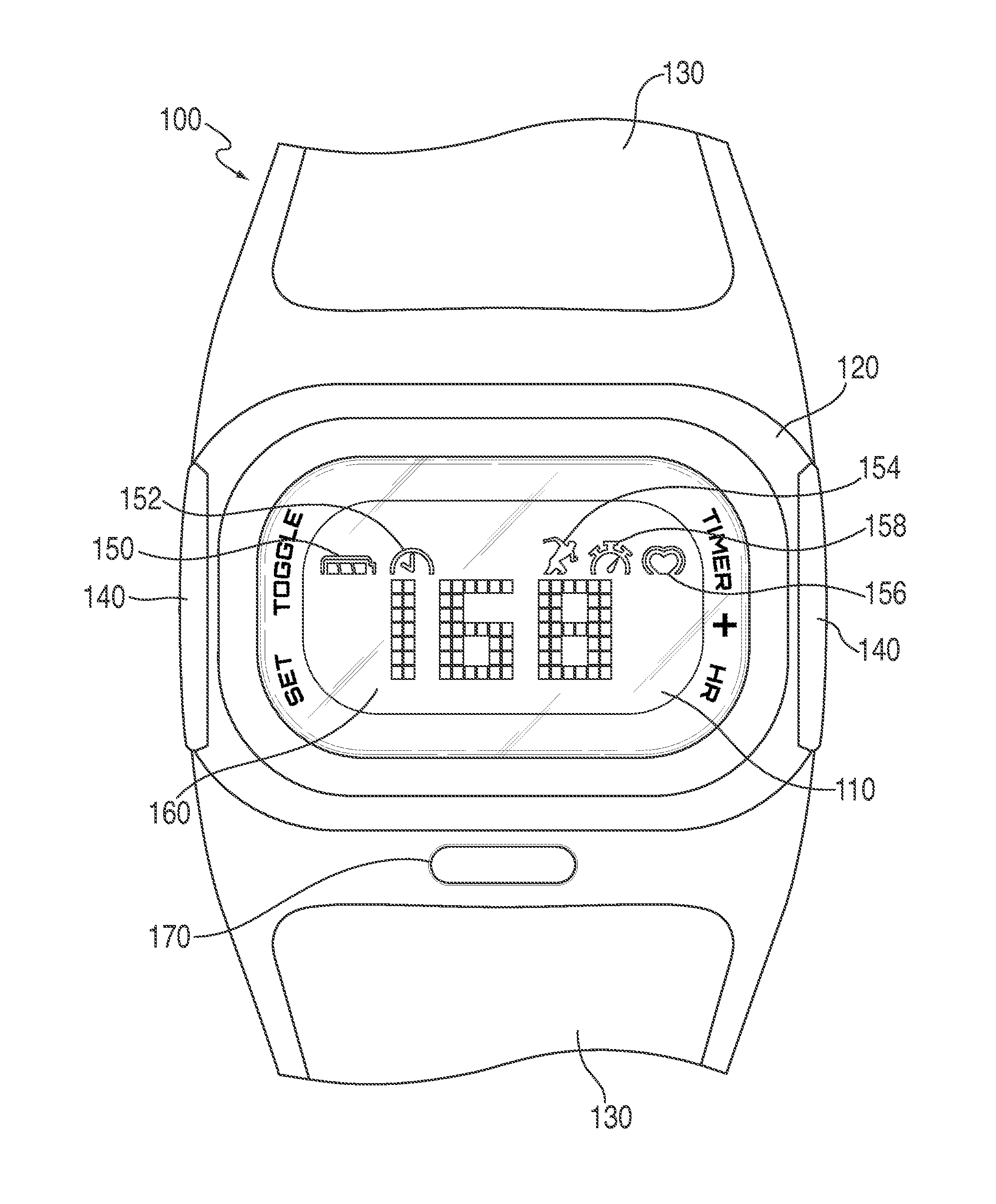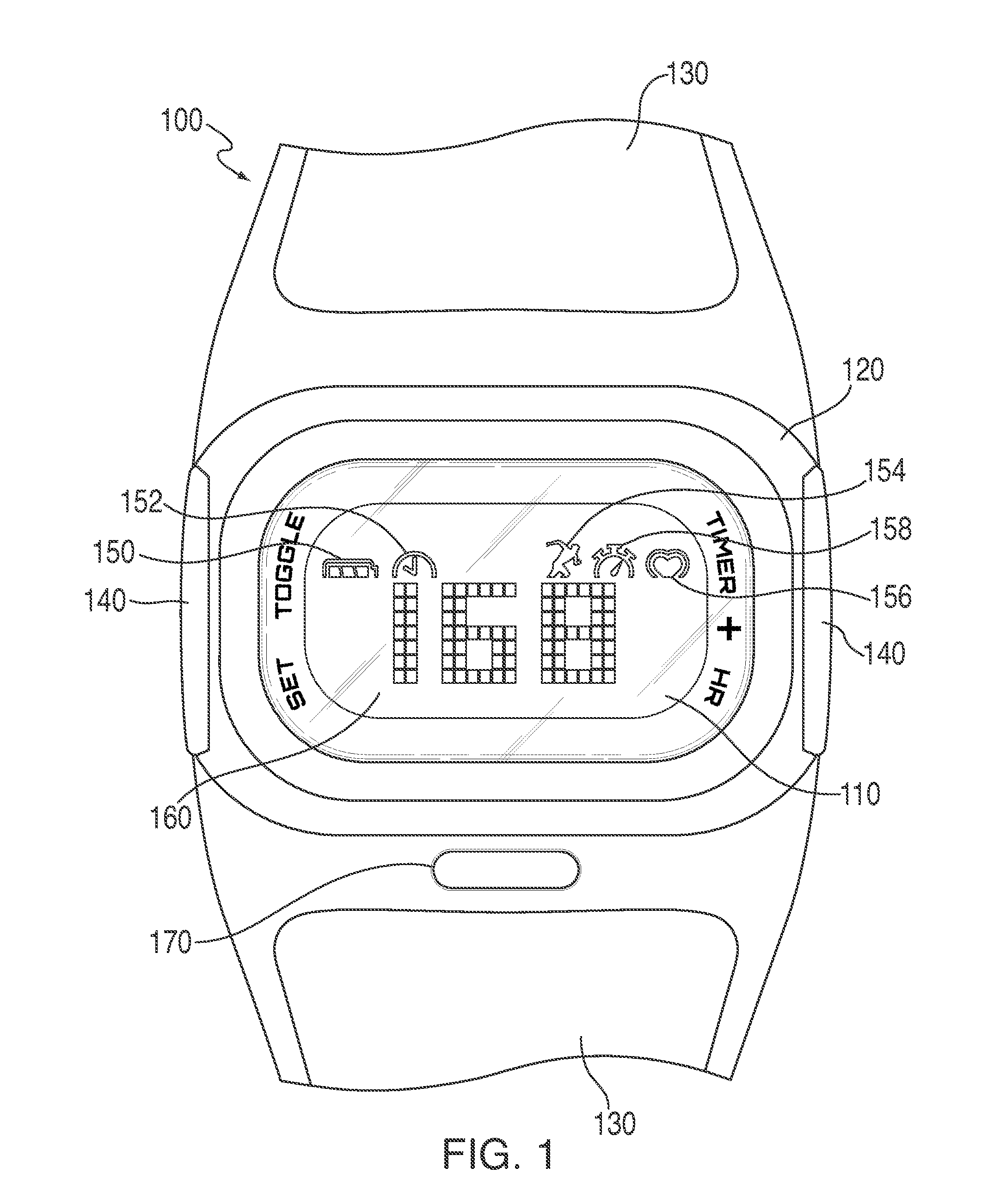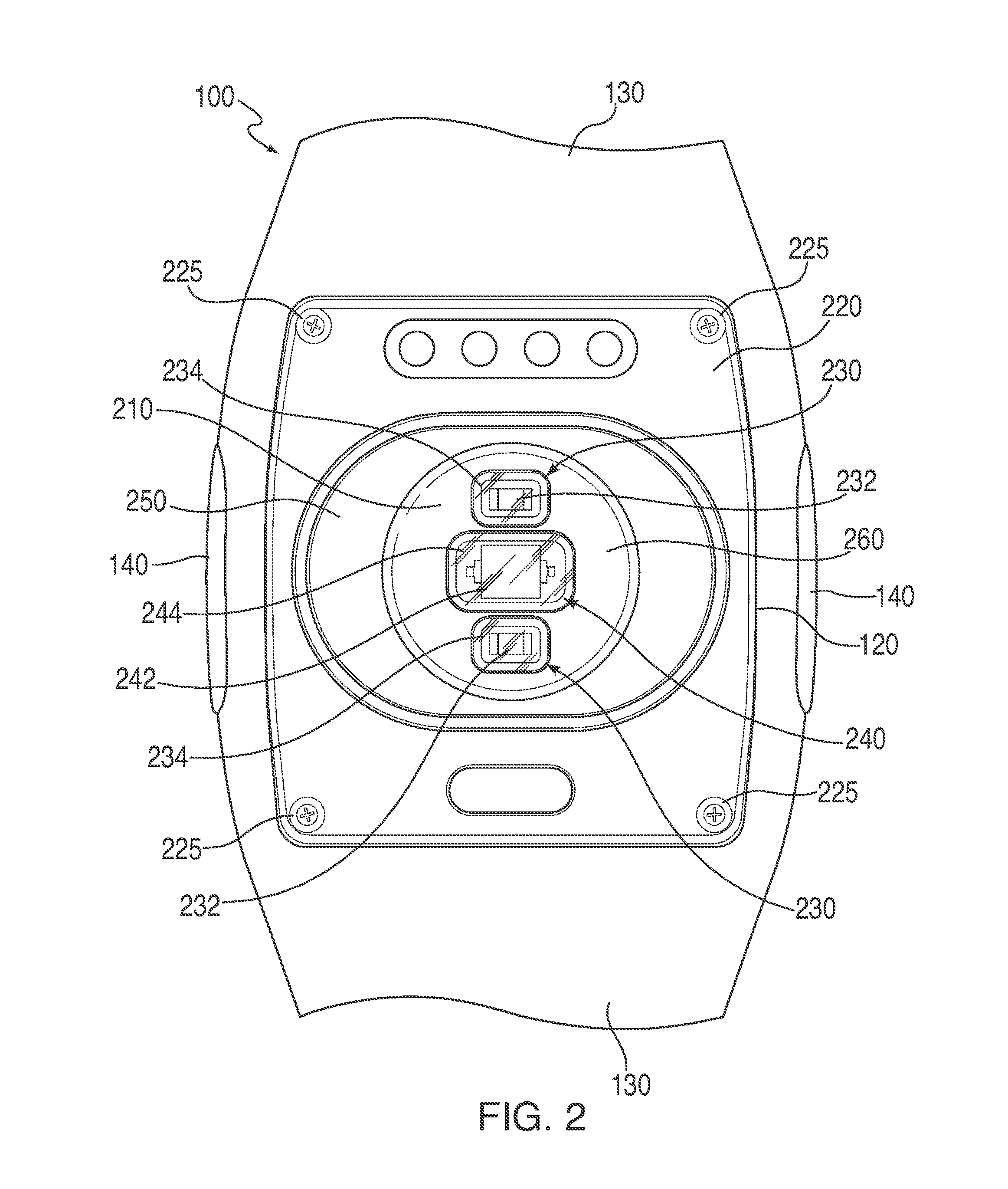Systems and Methods for Monitoring Physiological Parameters
- Summary
- Abstract
- Description
- Claims
- Application Information
AI Technical Summary
Benefits of technology
Problems solved by technology
Method used
Image
Examples
Embodiment Construction
[0025]Disclosed herein are embodiments of an apparatus for sensing, measuring, and displaying physiological information. In one aspect, the apparatus may comprise an optical sensor incorporated into a wearable device. The optical sensor may be incorporated at a location of the wearable device such that, in use, a surface of the optical sensor may be adjacent or in close proximity to a targeted area of a user's body. In one embodiment, the optical sensor may comprise one or more light sources for emitting light proximate the targeted area and one or more optical detectors for detecting reflected light from the targeted area.
[0026]In another aspect, the optical sensor may be incorporated into the wearable device such that at least a portion of the optical sensor may protrude or extend beyond at least a portion of a device housing. In some embodiments, a height which the portion of the optical sensor may extend beyond the device housing may be adjustable. The adjustment of the protrusi...
PUM
 Login to View More
Login to View More Abstract
Description
Claims
Application Information
 Login to View More
Login to View More - R&D
- Intellectual Property
- Life Sciences
- Materials
- Tech Scout
- Unparalleled Data Quality
- Higher Quality Content
- 60% Fewer Hallucinations
Browse by: Latest US Patents, China's latest patents, Technical Efficacy Thesaurus, Application Domain, Technology Topic, Popular Technical Reports.
© 2025 PatSnap. All rights reserved.Legal|Privacy policy|Modern Slavery Act Transparency Statement|Sitemap|About US| Contact US: help@patsnap.com



